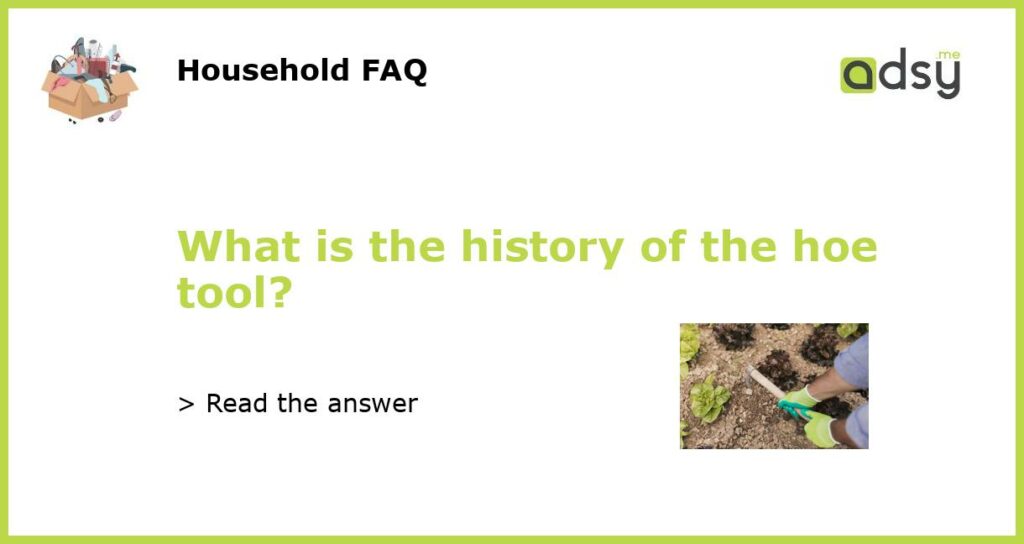The History of the Hoe Tool
The hoe is a common gardening and farming tool that has been used for centuries. It is a versatile tool that is used for breaking up soil, removing weeds, and cultivating crops. The history of the hoe tool dates back to ancient times, and it has evolved and adapted to different cultures and agricultural practices over the years.
Ancient Origins
The hoe has been a fundamental agricultural tool for many civilizations throughout history. Its exact origins are difficult to trace, but evidence of its use dates back to ancient Egypt, Mesopotamia, and China. In ancient Egypt, hoes were made from wooden or bone blades attached to wooden handles. These hoes were used to break up and loosen the soil for planting crops such as wheat, barley, and flax.
In Mesopotamia, the ancient Sumerians used a similar type of hoe made from a V-shaped blade attached to a wooden handle. These hoes were used for cultivating crops such as barley and dates. In China, bronze hoes were first used during the Shang Dynasty (1600-1046 BC). These hoes featured a flat, rectangular blade with a hole at the top for attaching a wooden handle.
The Roman Influence
The Romans played a significant role in the development of the hoe tool. They introduced a more streamlined design with a forged iron blade and a long wooden handle. These hoes were used for both agriculture and gardening purposes. Roman hoes were often used in conjunction with other farming tools, such as plows and sickles, to maximize efficiency and productivity.
The Romans also developed more specialized hoes, such as the mattock, which had a chopping blade on one side and an adze-like blade on the other. This tool was used for digging and breaking up soil. The Romans’ advanced agricultural techniques and tools greatly influenced the development of farming practices throughout Europe.
The Evolution in Europe
In Europe, the design and use of hoes continued to evolve during the medieval and Renaissance periods. During this time, hoes were primarily made from iron and featured a flat, rectangular blade. The size and shape of the blade varied depending on the region and the intended use of the hoe.
During the Renaissance, the Dutch developed a new type of hoe known as the scuffle or Dutch hoe. This hoe had a flat, paddle-like blade that was pushed back and forth to cut through weeds. The Dutch hoe quickly became popular in Europe and remains a common gardening tool today.
The Modern Hoe
In the 19th and 20th centuries, advancements in technology and agriculture led to the development of new types of hoes. Steel blades replaced iron, making hoes more durable and efficient. Different styles of hoes were created for specific tasks, such as the draw hoe for surface cultivation and the swan-neck hoe for reaching weeds in tight spaces.
Today, the hoe tool continues to be an essential tool for gardeners and farmers. It has undergone further refinements and improvements, such as ergonomic handles and lightweight materials. The traditional design of the hoe may have changed, but its purpose and functionality remain the same – to make gardening and farming easier and more productive.






